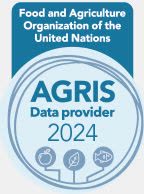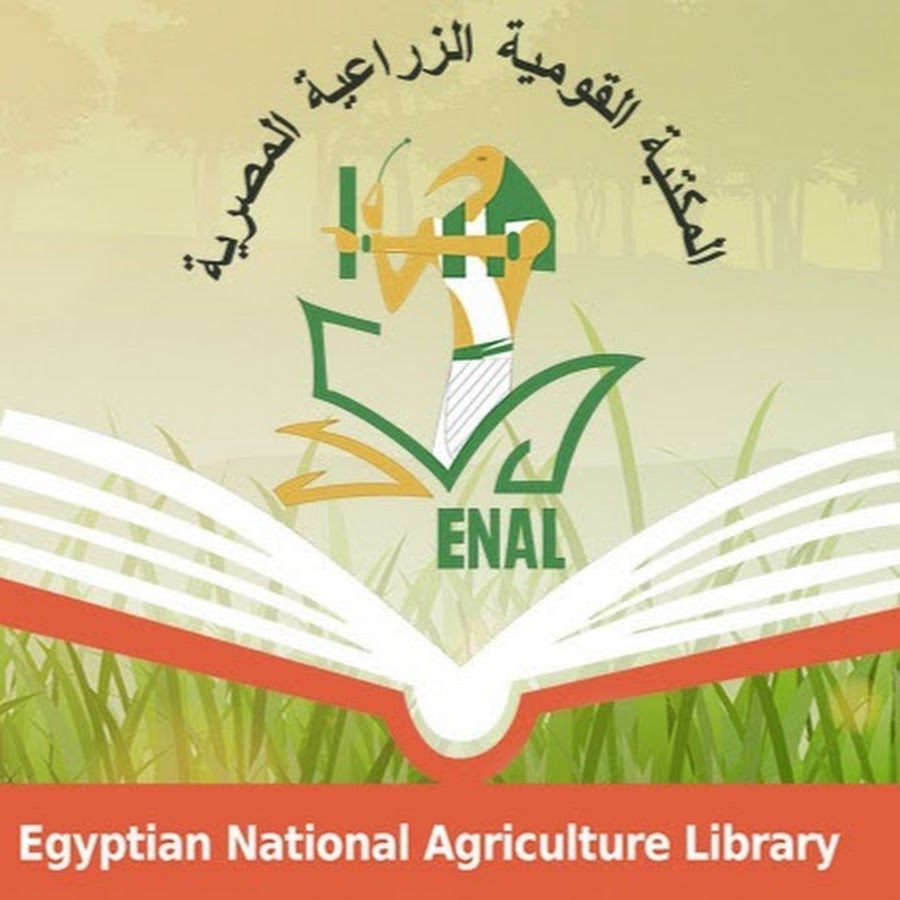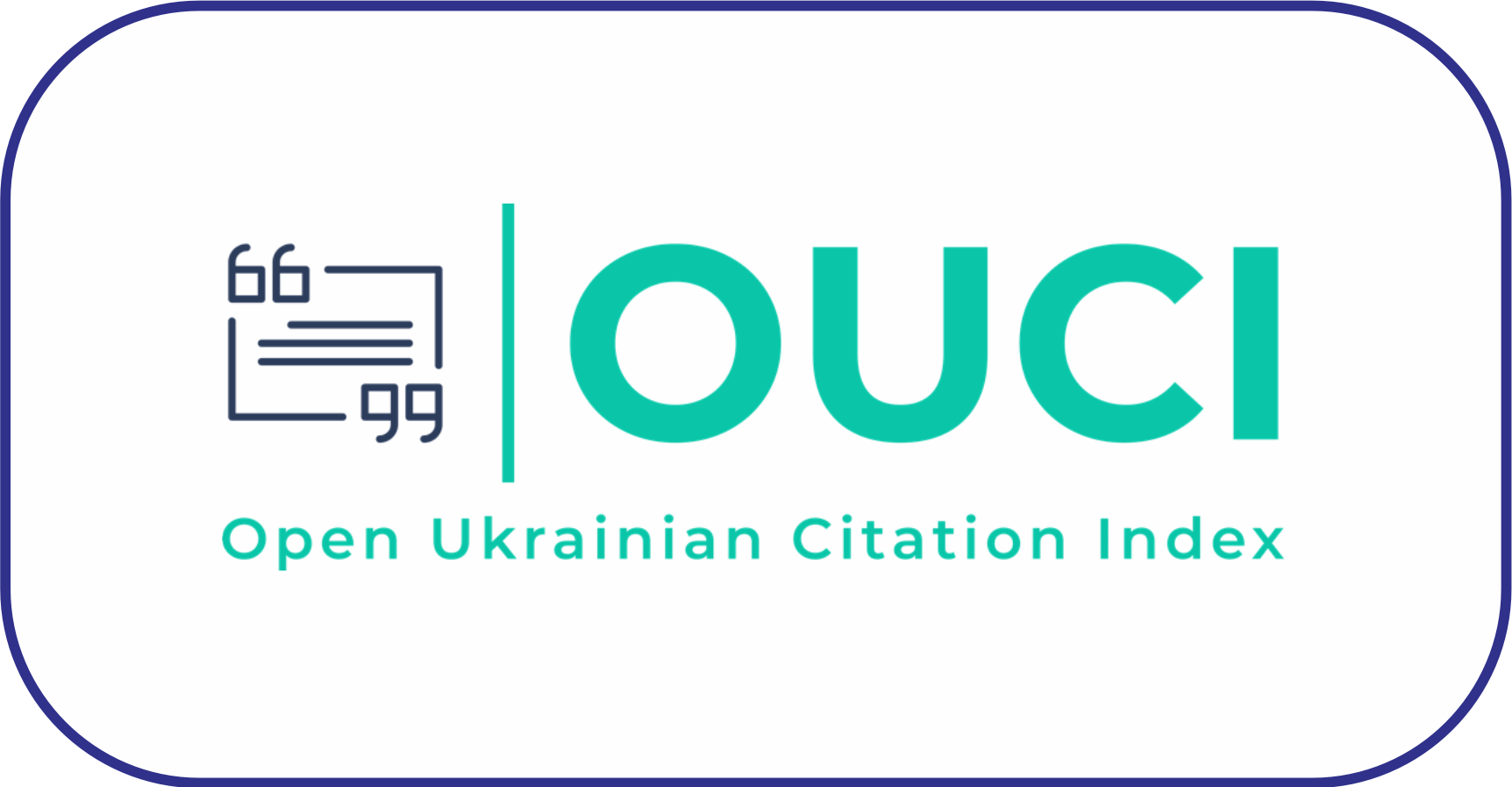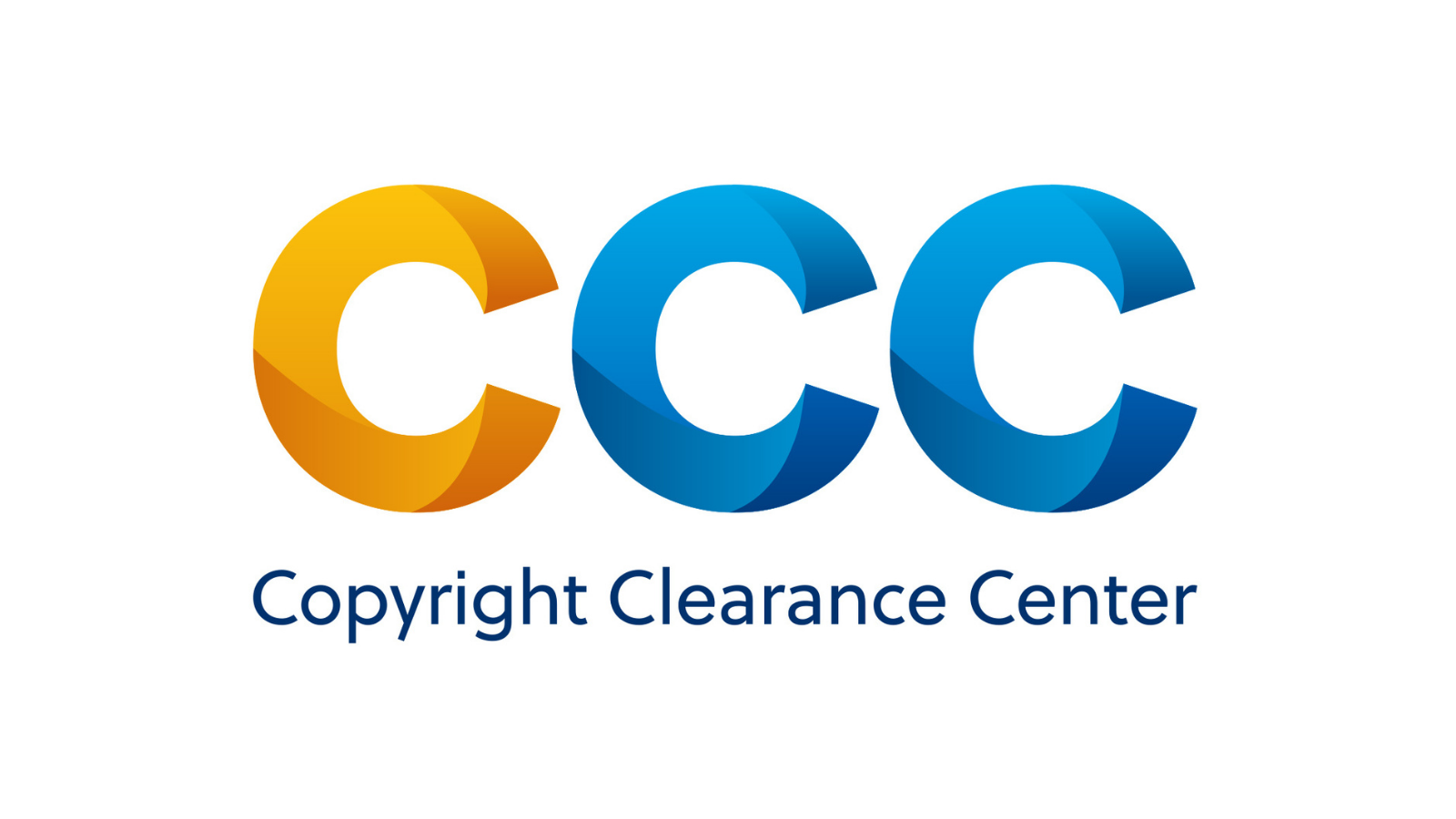ISSN: 3079-174X
Guidelines for Authors
Journal Abbreviation
The correct abbreviation of Advances in Agriculture and Biology for abstracting and indexing purposes is Adv. Agric. Biol.
ISSN
Our electronic international standard serial number (eISSN) is 3079-174X.
Criteria for Publication
The criteria for publication in Advances in Agriculture and Biology include originality and creativity of the research with a scientific significance that holds appeal for a diverse, interdisciplinary readership on a global scale.
Types of Papers
Original/Regular Papers
Original papers/Regular papers/Research papers should report the results of original scientific research and they are of outstanding scientific importance, and they reach a conclusion of interest of an interdisciplinary readership. The material (main results and conclusions) must not have been published or submitted elsewhere. The length of original/research papers should be within the range of 5000-7000 words. Word counts refer to the title, author list, author affiliation, text of the paper, tables, figures, acknowledgements and references.
Reviews
Reviews/Review articles should cover a part of the subject of active current interest and a summary and discussion of the relevant literature. The length of reviews should be within the range of 5000-8000 words including tables and figures.
Mini-reviews
A sharply focused, selectively referenced summary and assessment of the relevant literature particularly effective when discussing cutting-edge advancements in the discipline. The length of mini-reviews should be within the range of 3000-4000 words including tables and figures.
Short Communications
A short communication is a concise, but complete, description of a limited investigation, which will not be included in a later paper. Short communications should be as completely documented, both by reference to the literature and description of the experimental procedures employed, as a regular paper. The length of short communications should be within the range of 4000-5000 words including tables and figures.
Articles Formatting
This guide describes how to prepare contributions for submission. We recommend you read this in full if you have not previously submitted a contribution to Advances in Agriculture and Biology. We also recommend that, before submission, you familiarize yourself with Advances in Agriculture and Biology’s style and content by reading the journal online, particularly if you have not submitted to the journal recently. Research articles are original reports whose conclusions represent a substantial advance in understanding of an important problem and have immediate, far-reaching implications in agricultural and biological sciences.
Resubmissions Enquiries
If you wish to enquire whether your article might be suitable for consideration by Advances in Agriculture and Biology, please send email to the editor of the journal (editor@aabinternational.com). All resubmissions enquiries must include a cover paragraph to the editor stating the interest to a broad scientific readership, a fully referenced summary paragraph, and a reference list.
Readability
Advances in Agriculture and Biology is an international journal covering agricultural and biological sciences. Contributions should therefore be written clearly and simply so that they are accessible to readers in other disciplines and to readers for whom English is not their first language. Thus, technical jargon should be avoided as far as possible and clearly explained where its use is unavoidable. Abbreviations, particularly those that are not standard, should also be kept to a minimum. The background, rationale and main conclusions of the study should be clearly explained. Titles and abstracts in particular should be written in language that will be readily intelligible to any scientist. For gene, protein and other specialized names authors can use their preferred terminology so long as it is in current use by the community, but they must give all known names for the entity at first use in the paper. Advances in Agriculture and Biology prefer authors to use internationally agreed nomenclature. Even though no paper will be rejected because of poor language, non–native English speakers occasionally receive feedback from editors and reviewers regarding language and grammar usage in their manuscripts. Advances in Agriculture and Biology's editors provide detailed advice about the expected print length when asking for the final version of the manuscript. The editors often suggest revised titles and rewrite the summary paragraphs of articles so the conclusions are clear to a broad readership.
Proofs are sent before publication; authors are welcome to discuss proposed changes with Advances in Agriculture and Biology’s subeditors, but Advances in Agriculture and Biology reserves the right to make the final decision about matters of style and the size of figures.
Covering Letter
The covering letter includes the names, affiliation, phone numbers and e-mail address of corresponding author(s), total number of words of the manuscript, conflict of interest statement for all authors, brief introduction to the significance of the research work, statement of responsibility that specifies the contribution of each author.
Article Structure
The manuscript should be written in English with a simple layout. The text should be prepared in a single column format. Manuscript should be submitted in MS Word. Use a normal, plain font (e.g. 10-point Times New Roman) and double spaced for text. Bottom page number and continuous line numbering should be included throughout the manuscript. Abbreviations should be defined at first mention and use consistently thereafter. Ample margin should be left on each side. Authors’ institutional address should follow authors name and will not appear as a footnote. In all kinds of papers, et al. should be non-italic. Papers may be organized conveniently as: Full Title, Authors, Affiliation, Key Message (for original paper only), Abstract, Keywords, Introduction, Materials and Methods, Results, Discussion, Conclusion, Acknowledgments, Conflict of interest, Author contributions, References, Tables and Figures, Supplementary materials, Proofs, Warranties and copyrights, Ethical issues, and Withdrawal of manuscripts.
Title Page
Title page includes a concise and informative title, name(s) of the author(s), the affiliation(s) and address(es) of the author(s), the current e-mail address, and telephone numbers of the corresponding author (s). All authors are responsible for the content of the manuscript. The title should be without any abbreviations and it should enlighten the contents of the paper.
Key Message
Please summarize the main achievement of your manuscript beyond the meaning of the manuscript title. This “Key Message” may not contain more than 50 words, and is essential for original research papers only. It is not needed for Reviews, Mini-reviews and Short communications.
Abstract
Articles start with a summary paragraph (abstract), ideally within the range of 200-300 words that avoids non-standard abbreviations, and if necessary they should be clearly defined in the abstract, at first use. The abstract should be concise and informative. It is aimed at readers outside the discipline. This summary paragraph should be structured as follows: 2-3 sentences of basic-level introduction to the field; a brief account of the background and rationale of the work; 2-3 sentences of techniques and methods used, 2-3 sentences putting the main findings with important data and conclusions. No references should be cited in this part.
Keywords
Provide a list of 6-8 words/phrases that reflect the specificity of the paper for indexing purposes in order of importance. Careful selection of keywords will help researchers to retrieve, read and cite your paper. Keywords must be given below the Abstract. They should be arranged alphabetically and separated by a comma. Use of abbreviations should be avoided, only standard abbreviations, well known in the established area may be used, if appropriate.
Introduction
Briefly introduce the purpose of the study and its relationship to earlier work in the field. Provide an adequate and factual background, clearly defined problem, proposed solution, avoiding a detailed literature survey or a summary of the results. State the objectives of the work at the end of the introduction section.
Material and Methods
Provide sufficient details to allow the work to be reproduced by an independent researcher. Methods that are already published should be summarized, and indicated by a reference. If quoting directly from a previously published method, use quotation marks and also cite the source. Any modifications to existing methods should also be described. This section will include sub-sections.
Result and Discussion
Results and discussion may be in a single section as “Results and Discussion” or if necessary, can be split into separate “Results” and “Discussion” sections. Present your results in a logical sequence in the text, tables and figures. Do not repeat in the text all the data given in the tables and figures rather than emphasize only important observations. Also avoid repeated information that already existed in the "Introduction" section. Discussion should be logical and results must be discussed in the light of previous literature justifying your findings. Summarize the findings without repeating the data in results section. Relate your observations to important relevant studies; point out the implications of the results and their limitations.
Conclusion
Conclusion should be given in a separate heading and briefly state the major findings of the study.
Acknowledgment
A brief acknowledgement section may be given after the conclusion section just before the references. The acknowledgements of people who provided assistance in manuscript preparation, funding for research, etc. should be listed in this section. All sources of funding should be declared as an acknowledgement. Authors should declare the role of the funding agency, if any, in the study design, collection, analysis and interpretation of data; in the writing of the manuscript. If the study sponsors had no such involvement, the authors should so state.
Conflict of Interest
Declaration of competing interest should be placed here. All authors must disclose any financial and personal relationships or interests with other people or organizations that could inappropriately (or appropriately) influence (bias) their work. Examples of potential conflicts of interests that are directly or indirectly related to the research may include but not limited to the following: Research grants from funding agencies (please give the research funder and the grant number), Honoraria for speaking at symposia, Financial support for attending symposia, Financial support for educational programs, Employment or consultation, Support from a project sponsor, Position on advisory board or board of directors or other types of management relationships, Multiple affiliations, Financial relationships, e.g., equity ownership or investment interest, Intellectual property rights (e.g., patents, copyrights and royalties from such rights), Holdings of spouse and/or children that may have financial interest in the work. In addition, interests that go beyond financial interests and compensation (non-financial interests) that may be important to readers should be disclosed. These may include but are not limited to personal relationships or competing interests directly or indirectly tied to this research, or professional interests or personal beliefs that may influence your research. If no such declaration has been made by the authors, AAB reserves to assume and write this sentence: “Authors have declared that no competing interests exist.”
Authors’ Contributions
Authors may use the following wording for this section: ‘Author A’ designed the study, performed the statistical analysis, wrote the protocol, and wrote the first draft of the manuscript. ‘Author B’ and ‘Author C’ managed the analyses of the study. ‘Author C’ managed the literature searches…… All authors read and approved the final manuscript.”
References
Use APA style guide, 6th edition for setting references of articles:
Journal Articles References
Socket, H. T. (1987). Has Shulman got the strategy right? Harvard Educational Review, 57, 208–219.
Authors
Use & not and. Use initials instead of full first and/or middle names.
Year
Year must be in parentheses i.e. (year).
Article title
Article title, only capitalize the first word of the title and subtitle—unless a proper name/noun follows. It should not be italicized.
Journal title
Journal title, only capitalize the first word of the title and subtitle. Italicize.
Volume number and issue number
Volume number italicized. Include issue number in parenthesis if each issue starts on page 1 or if you are unsure—the issue number will NOT be italicized e.g. 57(1).
Page number
A punctuation mark dash (–) is put between first and last page of the journal where the article has been published; no space is left between these pages (first and last pages). e.g. 208–219.
Examples
Abbasi, N. A., Hafiz, I. A., Qureshi, A. A., Ali I., & Mahmood, S. R. (2014). Evaluating the success of vegetative propagation techniques in Loquat cv. Mardan. Pakistan Journal of Botany, 46(2), 579–584.
Achim, C., & Botu, I. (2001). Results in walnut propagation by using different methods. Acta Horticulturae, 442, 503–510.
Chunming, X., Fushan, H., Jianhua, J., Huiming, Q., & Huijun, X. (2000). Guanyu, a new large fruited loquat variety. South China Fruits, 29(1), 33–34.
El-Deen, E. Z., & El-Rhman, I. A. (2011). Studies on grafting methods and dates of pistachio trees under supplemental irrigation in North Sinai. Research Journal of Agriculture and Biological Sciences, 7(6), 456–463.
Journal Article from Publisher Web Site (article with no DOI)
Koopman, W. J. (2001). Prospects for autoimmune disease: Research advances in rheumatoid arthritis. JAMA: Journal of the American Medical Association, 285, 648–650. Retrieved from http://jama .ama-assn.org/
Full Text Article with Digital Object Identifier (DOI)
Yu, H., Zhou, Y.-J., Li, G.-X., Zhang, G.-H., Liu, H.-L., Yan, L.-P., & Tong, G.-Z. (2009). Further evidence for infection of pigs with human-like influenza viruses in China. Virus Research, 140, 85–90. doi:10.1016/j.virusres.2008.11.008
Book References
Editions: No edition information is required for first editions.
Publication location: Publisher locations in the U.S.A. should include the city and the abbreviated version of the state (e.g. NY for New York); elsewhere in the world, include the city and country. Where more than one location is provided, use the first location listed.
Print book
Author, A. A., & Author, B. B. (year of publication). Title of book. Location of publication: Publisher.
Author, A. A., & Author, B. B. (year of publication). Title of book (edition). Location of publication: Publisher.
Authors
Use & not and. Use initials instead of full first/given or middle names.
Year
Year must be in parentheses i.e. (year).
Title
Title of book should be italicized. Capitalize the first word of the title and subtitle—unless a proper name/noun follows.
Place of publication
Colon (:)
Publisher name
For example
Cushing, C. E., & Allan, J. D. (2001). Streams: Their ecology and life. San Diego, CA: Academic Press.
Aronsson, L. (2000). The development of sustainable tourism. London, England: Continuum. Hayes, S. C., Stosahl, K. D., & Wilson, K. G. (1999). Acceptance and commitment therapy. New York, NY: Guilford Press.
Mook, D. (2004). Classic experiments in psychology. Westport, CT: Greenwood.
Electronic book
The URL provided should be the website of the main publisher or provider. If you accessed the e-book via the catalogue, check the catalogue record to find the publisher or provider (where the full text is available from).
Chapter of a print book
Author, A. A., & Author, B. B. (year of publication). Title of chapter. In A. Editor & B. Editor (Eds.), Title of book (pp. xxx-xxx). Location of publication: Publisher.
For example
Ramsey, J. K., & McGrew, W. C. (2005). Object play in great apes: studies in nature and captivity. In A. D. Pellegrini & P. K. Smith (Eds.), The nature of play: Great apes and humans (pp. 89-112). New York, NY: Guilford Press.
Regulus, T. A. (1995). Gang violence. In R. L. Edwards (Ed.), Encyclopedia of social work (19th ed., Vol. 2, pp. 1045–1055). Washington, DC: National Association of Social Workers.
Chapter of an electronic book
Author, A. A., & Author, B. B. (year of publication). Title of chapter. In A. Editor & B. Editor (Eds.), Title of book (pp. xxx-xxx). Retrieved from URL
OR
Author, A. A., & Author, B. B. (year of publication). Title of chapter. In A. Editor & B. Editor (Eds.), Title of book (pp. xxx-xxx). doi:xxxx
For example
Branch, S., Ramsay, S., & Barker, M. (2008). The bullied boss: a conceptual exploration of upwards bullying. In A. Glendon, B. M. Thompson, & B. Myors (Eds.), Advances in organizational psychology (pp. 93-112). Retrieved from htp:/www.informit.com.au/humanities.html
Thesis References
Published doctoral dissertation or master’s thesis
Author, A. A. (Year of publication). Title of thesis or dissertation (Doctoral dissertation or master’s thesis). Retrieved from Name of database. (Accession or Order no.)
For example
Bozeman, A. Jr. (2007). Age of onset as predictor of cognitive performance in children with seizure disorders. (Doctoral dissertation). Retrieved from Proquest Dissertations and Theses. (UMI 3259752)
Unpublished doctoral dissertation or master’s thesis
Author, A. A. (Year of publication). Title of thesis or dissertation (Unpublished Doctoral dissertation or master’s thesis). Name of Institution, Location.
For example
Imber, A. (2003). Applicant reactions to graduate recruitment and selection. (Unpublished Doctoral dissertation.) Monash University, Melbourne, Victoria, Australia.
Magazine Articles References
Magazine article – online In-text references
Kluger and Dorfman (2002) evaluated the............. OR
. . . (Kluger & Dorfman, 2002).
Reference page
Author, A. A. (year, month of publication). Title of article. Magazine Title, volume number(issue number), page-page. Retrieved from URL
For example
Novotney, A. (2010, January). Integrated care is nothing new for these psychologists.
Monitor on Psychology, 41(1). Retrieved from www.apa.org/monitor
Kluger, J., & Dorfman, A. (2002, August 26). The challenges we face. Time, 160(9), 32–38.
Magazine article – Print
Author, A. A. (year, month of publication). Title of article. Magazine Title, volume number(issue number), page-page.
For example
Wilson, D. S., & Wilson, E. O. (2007, November 3). Survival of the selfless. NewScientist, 196(2628), 42-46.
Newspaper Articles References
Newspaper articles – no author In-text references
The article title will be placed between quotation marks in the text of the essay. In the article “Rotor Blades Fail Inspection” (2002)... OR
. . . (“Rotor Blades Fail Inspection,” 2002).
Reference page
If no author is present, use the title of the article in place of the author’s name. Rotor blades fail inspection. (2002, July 27). Medicine Hat News, p. A1.
Newspaper articles – with author online
Author, A. A. (year, month date of publication). Title of article. Newspaper Title. Retrieved from URL
For example
Gadher, D. (2007, September 2). Leap in gambling addiction forecast. The Sunday Times.
Retrieved from http://www.timesonline.co.uk
Newspaper articles – with author print
Author, A. A. (year, month date of publication). Title of article. Newspaper Title, pp. page- page.
For example
Packham, B. (2010, January 18). Bullies to show concern: schools to try Euro method that lets thugs off the hook. Herald-Sun. pp. 6.
Conference Proceedings References
Conference proceedings (unpublished) Paper presentation or poster session:
Presenter, A. A. (Year, Month). Title of paper or poster. Paper or poster session presented at the meeting of Organization Name, Location.
For example
Jodell, F., Russell, F., Tepper, K., Todd, P. & Zahora, T. (2009, September). Joined at the hip: partnerships between librarians and learning skills advisers. Poster session presented at the International Congress of Medical Librarianship, Brisbane.
Conference proceedings (Published)
Use book chapter format for one-off publications. Cite regular publications as per scholarly journal articles.
Technical Report References
Author, A. A. (Year of publication). Title of work (Report No. xxx). Location: Publisher.
For example
Tayama, T. (2006). Velocity influence on detection and prediction of changes in color and motion direction (Report No. 38, 1-20). Sapporo, Japan: Psychology Department, Hokkaido University.
Australian Government Department of Families, Housing, Community Services and Indigenous Affairs. (2008). The road home: a national approach to reducing homelessness. Retrieved from http://www.fahcsia.gov.au/sa/housing/progserv/homelessness/whitep aper/Documents/default.htm
Brochure – Same Author and Publisher
In-text references
Brochure – Same Author and Publisher
In the brochure by Travel Alberta (2002)............. OR
. . . (Travel Alberta, 2002).
Reference page
When the author and publisher are identical then use the word author as the publisher. Travel Alberta. (2002). Official Alberta vacation guide [Brochure]. Edmonton, Canada: Author.
A Review References
In-text references
In Osborne’s (1998) review of the book . . . .
OR
. . . (Osborne, 1998).
Reference page
In square brackets use the phrase ―Review of the‖ and the type of material reviewed (book, video, etc.). If the article/review has a formal title, it will precede the bracketed text.
For example
Osborne, R. E. (1998). [Review of the book The fabric of self: A theory of ethics and emotions, by D. Rothbard Margolis]. Choice, 36, 223.
Corporate Report/Group of Authors/Government Author
Group author/publisher style of reference will include corporations, associations, government agencies or study groups act as author and publisher. Spell out the full name of the group publisher and author; do not use abbreviations or acronyms if abbreviation not widely known. So give the name in full every time.
In-text references
For example
... (Australian Research Council, 1996).
The Health Canada (2006) report noted that.............. OR
. . . (Health Canada, 2006).
Reference page
If present, include publication or catalogue number in parenthesis after the title.
For example
Health Canada. (2006). Residential indoor air quality guideline: Formaldehyde (HC Publication No. 4120). Retrieved from http:// www.hc-sc.gc.ca/ewh- semt/alt_formats/hecs-sesc/pdf/pubs/air/ formaldehyde-eng.pdf
If organization is recognized by abbreviation, cite the first time as follows:
... (Australian Institute of Health and Welfare [AIHW], 2005) thereafter
... (AIHW, 2005).
Web Page References
In-text references
Cite electronic information the same way as printed works, use the author and date of electronic publication.
For example
A document from the United Nurses of Alberta (2009) suggests that . . . .
OR
. . . (United Nurses of Alberta, 2009).
Reference page
Provide as many of the bibliographic elements as are available.
Include the complete Web address for the page of information (cut and paste the web address to ensure accuracy).
Be sure that the Web site hosting a document is the actual author; a Web site might be hosting the information for other organizations.
For example
United Nurses of Alberta. (2009, June). Fishing for facts on the nursing shortage? Retrieved from http://www.una.ab.ca/news/archive/pdfs/ Wrong%20Way/redherring.pdf
Food Groups. (2008, December 3). Retrieved October 20, 2009, from http://apastyle.org/learn/faqs/web-page-no-author.aspx.
If there is no author, move the title to the beginning of the reference e.g. Food Groups in the above reference.
Date posted, updated, or published if provided. e.g. 2008, December 3 in the above reference. Use n.d (for no date) otherwise.
Wiki Entry References
In-text references
The “APA Style” (2009) article suggests that . . . .
OR It is suggested that........ (“APA Style,” 2009).
Reference page
The date of retrieval must be included when citing a wiki article.
For example
APA style. (2009, October 15). In Wikipedia: The free encyclopedia. Retrieved October 20, 2009, from http://en.wikipedia.org/wiki/ APA_style
Important Note
In-text references (with one author)
Regulus (1995) determined . . . .
OR
. . . (Regulus, 1995).
In-text references (with two authors)
Kluger and Dorfman (2002) evaluated the…. OR
…..(Kluger & Dorfman, 2002).
In-text references (with more than two authors)
Yu et al. (2009) discovered that . . . .
OR
It was discovered that......... (Yu et al., 2009).
Multiple works by same author
When cited together give the author's surname once followed by the years of each publication, which are separated by a comma.
... (Stairs, 1992, 1993).
Stairs (1992, 1993)...
Multiple works by same author AND same year
If there is more than one reference by an author in the same year, suffixes (a, b, c, etc.) are added to the year.
Allocation of the suffixes is determined by the order of the references in the reference list. Suffixes are also included in the reference list, and these references are listed alphabetically by title. If cited together, list by suffix as shown below.
Stairs (1992b)... later in the text........ (Stairs, 1992a).
...(Stairs, 1992a, 1992b).
Multiple references
List the citations in alphabetical order and separate with semicolons.
... (Burst, 1995; Turner & Hooch, 1982; Zane, 1976).
Quote from an electronic source
Where page numbers are not provided use paragraph numbers.
...(Sturt, 2001, para. 2)
Sample References
Adler, M. (1985). Ten philosophical mistakes. New York, NY: Macmillan.
Audi, R. (Ed.). (1995). The Cambridge dictionary of philosophy. Cambridge, England: Cambridge University Press.
Forsythe, D., Delaney, C., Maloney, N., Kubesh, D., & Story, D. (1989). Can caring behavior be taught? Nursing Outlook, 37(4), 164–166.
Gadamer, H. G. (1981). Reason in the age of science (F. G. Lawrence, Trans.). Cambridge, MA: MIT Press.
Kenny, A. (1978). The Aristotelian ethics. Oxford, England: Clarendon Press.
Leonard, V. W. (1996). Mothering as a practice. In S. Gordon, P. Benner, & N. Nodding (Eds.),
Caregiving (pp. 124–140). Philadelphia, PA: University of Pennsylvania Press.
MacIntyre, A. (1984). After virtue (2nd ed.). Notre Dame, IN: University of Notre Dame Press.
Merriam-Webster’s collegiate dictionary (10th ed.). (1997). Springfield, MA: Merriam- Webster.
Nussbaum, M. C. (2000). The fragility of goodness: Luck and ethics in Greek tragedy and philosophy. Cambridge, England: Cambridge University Press.
Reed, P. (1999). A treatise on nursing knowledge development in the 21st century: Beyond postmodernism. In E. C. Polifroni & M. Welsh (Eds.), Perspectives on philosophy of science in nursing (pp. 478–490). Philadelphia, PA: Lippincott.
Saul, J. R. (1993). Voltaire's bastards: The dictatorship of reason in the West. Toronto, Canada: Penguin Books.
Sherman, N. (1989). The fabric of character: Aristotle's theory of virtue. Oxford, England: Clarendon Press.
Sockett, H. T. (1987). Has Shulman got the strategy right? Harvard Educational Review, 57, 208–219.
Taylor, C. (1995). The dialogical self. In R. F. Goodman, & W. R. Fisher (Eds.), Rethinking knowledge (pp. 57–66). Albany, NY: State University of New York Press.
Webster's ninth new collegiate dictionary. (1991). Springfield, MA: Merriam-Webster.
Flaming, D. (2002). Using nursing science does not guarantee nursing excellence. Research and Theory for Nursing Practice, 16, 147–159.
Tables and Figures
Tables and Figures should be placed inside the text. Tables and Figures should be presented as per their appearance in the text. It is suggested that the discussion about the tables and figures should appear in the text before the appearance of the respective Tables and Figures. No tables or figures should be given without discussion or reference inside the text. Tables should be explanatory enough to be understandable without any text reference. Table headings should be placed above the table. Each Figure should have a caption. The caption should be concise and typed separately, not on the Figure area. Figures should be self-explanatory. Information presented in the Figure should not be repeated in the Table. All symbols and abbreviations used in the illustrations should be defined clearly. Figure legends should be given below the figures. Upon submission of an article, authors are supposed to include all Figures and Tables in the MS word file of the manuscript. Figures and Tables should not be submitted in separate files. If the article is accepted, authors will be asked to provide the source files of the figures. Each figure should be supplied in a separate electronic file. All Figures should be cited in the paper in a consecutive order.
Supplementary Materials
Supplementary materials can support and enhance your scientific research. Supplementary files offer the author additional possibilities to publish supporting applications, high-resolution images, background datasets, sound clips and more. Please note that such items are published online exactly as they are submitted; there is no typesetting involved (supplementary data supplied as an Excel file or as a PowerPoint slide will appear as such online). Please submit the material together with the article and supply a concise and descriptive caption for each file. If you wish to make any changes to supplementary data during any stage of the process, then please make sure to provide an updated file, and do not annotate any corrections on a previous version. Please also make sure to switch off the "Track Changes" option in any Microsoft Office files as these will appear in the published supplementary file(s).
Proofs
A PDF file of proof will be sent to the corresponding author as an e-mail attachment. Authors will be asked to check any typographical or minor clerical errors in the manuscript at this stage. No other major alteration in the manuscript is allowed.
Warranties and Copyrights
By submitting the manuscript, the authors warrant that the entire work is original and unpublished; it is submitted only to this Journal and all text, data, figures/tables or other illustrations included in the research article are completely original and unpublished, and these have not been previously published or submitted elsewhere in any form or media whatsoever. All authors are responsible for the complete contents of their manuscript. The author(s) warrant that the work contains no unlawful or libelous statements and opinions and liable materials of any kind whatsoever, do not infringe on any copyrights, intellectual property rights, personal rights or rights of any kind of others, and does not contain any plagiarized, fraudulent, improperly attributed materials, instructions, procedures, information or ideas that might cause any harm, damage, injury, losses or costs of any kind to person or property. Each author(s) agrees to defend, indemnify, and hold harmless this publisher and the Editors for any breach of such warranties. It is authors' responsibility to obtain written copyright permissions from other sources (publishers) for reproduction of any figures, tables, photos, illustrations, text or other copyright materials from previously published work.
Ethical Issues
Authors cannot submit a manuscript for publication to other journals simultaneously. It is waste of valuable resources because editors and referees spent a great deal of time processing submitted manuscripts. It is also unethical to republish similar research articles (text/figures/tables) again because journals have limited page space and it most likely violates copyrights which have already been transferred to the first journal. As stated above that authors should submit original, new and unpublished research work to the journal. The ethical issues such as plagiarism, fraudulent and duplicate publication, violation of copyrights, authorship and conflict of interest are serious issues concerning ethical integrity when submitting a manuscript to a journal for publication.
Withdrawal of Manuscripts
If the author requests withdrawal of manuscript after submission within the time span when the manuscript is still in the peer-reviewing process with Editors/Referees, the author is allowed to withdraw the manuscript without paying any withdrawal penalty whatsoever. However, it is unethical to withdraw a submitted manuscript from the journal if accepted by another journal. The withdrawal of manuscripts from the journal after submitting to the publisher will incur a withdrawal penalty. After the manuscript is accepted for publication either through journal editors or guest editors, the withdrawal is not permitted. If the authors or conference organizers or a third party withdraw manuscripts any time after final manuscripts have already been submitted to AAB for processing, the request is not entertained without a significant withdrawal penalty. Authors or conference organizers or a third party are not allowed to withdraw submitted manuscripts because the withdrawal wastes valuable manuscript processing time, money and works invested by the publisher. The authors or conference organizers or a third party must always pay $100 per page manuscript processing charges as withdrawal penalty to the publisher even if the withdrawal is permitted. The withdrawal of the conference papers by conference organizers will never be permitted and the conference organizers will be punished for withdrawal by paying a withdrawal penalty of US$500 per manuscript. Withdrawal of manuscripts is only allowed after withdrawal penalty has been fully paid to AAB by the authors or conference organizers or a third party. Any reason whatsoever of withdrawal of submitted manuscripts is treated as invalid and completely unacceptable under any circumstances. The publisher is not responsible for any damages whatsoever resulting from this consequence of the author's or conference organizer's or a third party decision. All questions or differences whatsoever concerning manuscripts withdrawal from AAB whether as to construction or otherwise, shall be held in the local jurisdiction of the registered editorial office of AAB.


























